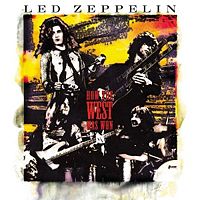
Led Zeppelin
How The West Was Won
[Atlantic; 2003]
I’ll be completely honest here; I don’t really listen to Led Zeppelin anymore. But without going into my own personal listening habits, I still hold How The West Was Won in very high regard: not just for the fact that it changed how I heard music, but because it probably is one of the best live albums ever.
Not only do the three discs capture Zeppelin at their best, the songs are also presented so as to sound (in my honest opinion) better than the majority of the studio recordings: “Immigrant Song” sounds like a completely different force to be reckoned with; “Bron-Y-Aur Stomp” has a fresh, infectious (ahem) stomp to it; “Whole Lotta Love” is made bearable by the excessive tangents it goes off on, taking a solid fifteen minutes to get back to the original riff; and “Going To California” capture a rare tenderness, which is admirable considering the vast live setting.
It was “Rock and Roll” in particular, though, that completely transformed the way I heard music. It also set the bar immeasurably high, making me snub many live albums for their inferior quality (Warning: don’t buy bootleg Muse live albums). But as time went by my listening changed, and I learned to find enjoyment from other musical points that weren’t twenty minute long drum solos or awesome-as-fuck guitar riffs, which is a good thing (I suppose). Still, there will always be the part of me which dreams of being at either the Long Beach or LA Forum show (or both), just to truly live this experience, which is greatly lasting just on CD (even when you haven’t listened to it in years). And I think that’s one of the defining traits of a truly great live album: it makes you wish you were there.
– Ray Finlayson

MC5
Kick Out The Jams
[Elektra; 1969]
Is there any doubt that Kick Out the Jams is the first fully formed punk record ever? Or even the first live rock ‘n’ roll album? The album is defined as much by its militant political band standing and white soul man attitude as its sheets of eviscerating twin-guitar feedback and willingness to mash avant anti-rock screes like “Borderline” against Sonny Boy Williamson-esque blues rallies like “Motor City Is Burning.” The quintet took unlikely and equal inspiration from James Brown’s Live at the Apollo and astral jazz savant Sun Ra, who gets a co-credit on the blistering finale “Starship” – a track that predates the space rock expeditions of krautrock by a year or so.
It’s an album that captures the repressed revolutionary sentiments of marginalized cities like Detroit and activist groups like the Black Panthers (or the MC5-associated White Panthers) and the Weathermen while much of the country’s counter-culture was still dallying in drugs and peace as a form of protest. As a live album, Kick Out the Jams captures the sloppy intensity of a group defined by their live shows and rock itself hadn’t surmounted its heights until maybe Comets On Fire.
– Will Ryan
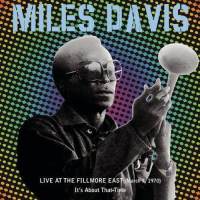
Miles Davis
Live at the Fillmore East, March 7, 1970: It’s About that Time
[Columbia/Legacy; 2001]
The 1970s was a difficult period for Miles Davis, despite being arguably the most creatively vivacious period of his career. His backing band changed almost every couple of weeks, causing the music to sound completely different on any given night as his lightly rehearsed troupe tried to feel each other out. In an ill-advised attempt to crash the rock market prior to the release of Bitches Brew, Miles opened for some 1970 touring rock mainstays; in the case of It’s About That Time: Neil Young and The Steve Miller Band (yup). Miles’ usual quintet was in and out of the picture, and the musicians who assembled for the two performances on It’s About That Time never officially existed (known as the “lost quintet”).
Most of the material on what was, until 2001, a bootleg, could be later found on Bitches Brew, but for fans of that record, much of It’s About That Time will likely be unrecognizable. This is the closest Miles Davis ever came to the all out, every-man-for-himself chaos of free jazz. Yet, it’s fraught with enough near-punk intensity that it’s hard to call anything but rock, despite the quintet here pedaling improvisational jazz in its tightest, rawest form. The quintet coalesce into raging, careening, bestial firestorm, Miles’ trumpet lashing out like wild sun flares, Wayne Shorter’s saxophone devolving into a squealing, skronking mess, and Jack DeJohnette’s drums spiraling into a twelve-armed rhythmic dance.
– Will Ryan

Mono
Holy Ground: NYC Live with the Wordless Music Orchestra
[Temporary Residence Limited; 2010]
Typically, when people think of the post-rock genre, they think Godspeed You! Black Emperor, Mogwai, and Explosions in the Sky. But there is another band out there that tends to be overlooked that’s just as good as any of those three – Mono. Hailing from Tokyo, Japan, the instrumental quartet comprised of guitarists Takaakira Goto and Yoda, bassist Tamaki Kunishi, and drummer Yasunori Takada are a veteran bunch that has five LPs under their belts, with an upcoming sixth later this year. For those who haven’t had the pleasure of seeing them live, Holy Ground: New York Live is an album they recorded with the Wordless Music Orchestra that acts as a window on how destructively beautiful they can be in a live setting. Though most of Mono’s songs already sound orchestral on their records, the implement of an expansive 24-piece string section allows their songs to soar new heights. Primarily playing from their latest album, Hymn to the Immortal Wind, songs such as “Ashes in the Snow,” “Where Am I,” and “Burial at Sea,” the reverberated guitars build progressively with the tense percussive rhythms, floating alongside the cellos and violins until they collide all together in a wall of sound. Basically, it cradles you comfortably–then out of nowhere, it shakes you violently. Holy Ground: New York Live is an experience to be witnessed, as Mono delivers one of their finest performances to date.
– Ace Ubas
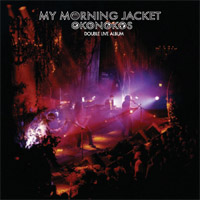
My Morning Jacket
Okonokos
[ATO Recordings; 2006]
My Morning Jacket’s colossal 2006 live album Okonokos came at a perfect time in the band’s career trajectory. The concerts on which the album focuses took place at San Francisco’s The Fillmore over two nights in the middle of their touring to promote their album Z, their third (what I would call) modern classic album in a row, following At Dawn and It Still Moves. Therefore the set list is absolutely packed with their best songs. Whether it’s dropping the jaw-dropping and show-stopping “One Big Holiday” right near the start, the terrifyingly roaring “Dondante” in the middle, or the emphatic “Mahgeetah” to finish, this album doesn’t let up for one second.
What little it lacks in studio polish (although the mixing is sublime), it more than makes up for in live grit and edge. Usually I find it difficult to pick which My Morning Jacket album to listen to, so I just lump for Okonokos since it’s the perfect mix. It’s also the perfect way to get into My Morning Jacket. Inevitably one day there will be a My Morning Jacket greatest hits, but it won’t feature as many of the deep cuts from their classic albums as this does. So for all intents and purposes Okonokos is and forever will be the definitive My Morning Jacket summation.
– Rob Hakimian
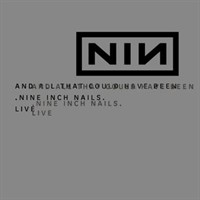
Nine Inch Nails
And All That Could Have Been
[Nothing Records; 2002]
A harrowing document of the tumultuous Fragility 2.0 tour, an undertaking that saw Trent Reznor’s physical and mental health unravel as he supported an album unfortunately (and unfairly) destined to become a cult object. Backed by a killer band, maybe his best ever, Reznor rips through the NIN catalog with an intensity that makes even the formidable studio versions of these songs sound toothless by comparison. The Pretty Hate Machine material in particular prospers in this setting. Try listening to this version of “Terrible Lie” followed by the original. It’s the only argument anyone needs for why NIN was one of the most in-demand touring acts in the world before Reznor hung it up in 2009.
– Sean Highkin
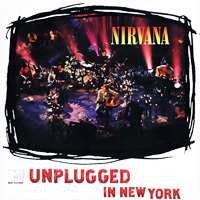
Nirvana
MTV Unplugged in New York
[DGC; 1994]
Recorded six months before Kurt Cobain’s death and released as an album six months after, it is easy to understand why MTV was so skeptical about the performance before it took place in November of 1993. For one, the album excluded most of the band’s biggest hits, deciding instead to include covers of artists as wide ranging as David Bowie and Lead Belly. Then there was the decision to invite the Meat Puppets on stage as guests to cover three (!) of their tunes. This did not appear to be a concert for the casual Nirvana fan, nor the casual MTV fan, but what resulted was something so much more.
In the wake of Cobain’s suicide, the unplugged format seemed all the more haunting and the surviving members agreed to a commercial release of the concert as a final testament to Cobain. The album prompted Bleach standout “About A Girl” to be an alternative radio hit, turned a new generation of fans onto David Bowie deep-cuts with their version of “The Man Who Sold The World” and saw the biggest transformation occur when the usually heavy “Pennyroyal Tea” was instead stripped down to just Cobain alone on guitar. But it’s on closer “Where Did You Sleep Last Night”–in which Cobain closed with a raspy, strained, and painful verse that seems to take every ounce of life that the singer had left in him–that fans were allowed to feel like they could say goodbye to the artist, adding something like closure to the painful period in rock and roll music.
– Philip Cosores
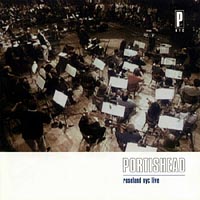
Portishead
Roseland NYC Live
[Go! Discs/London; 1998]
If you’re familiar with Portishead in the slightest, then this Roseland NYC set is the stuff of legend. Spawning both this live album and a DVD of the performance, Portishead proves electronic musicians can bring true muscle to a live show. While some of their followers take to the stage with just a microphone and a laptop, the band here chooses expansiveness. Guitars, turntables, and even a full orchestra make their presence felt here, and that’s not even to mention Beth Gibbons syrupy voice which in this live context preserves or even surpasses the sultry nature of her studio recordings. It’s a band at their best, at their most professional and there’s some untouchable moments that result. The orchestra playing the hook on the “Glory Box” lend what was already an incredible song a transcendence not present on the studio version. This isn’t just a band running through their hits, its the rare live album that presents reinterpretations, however slight, that improve the set of songs as a whole.
– Colin Joyce

